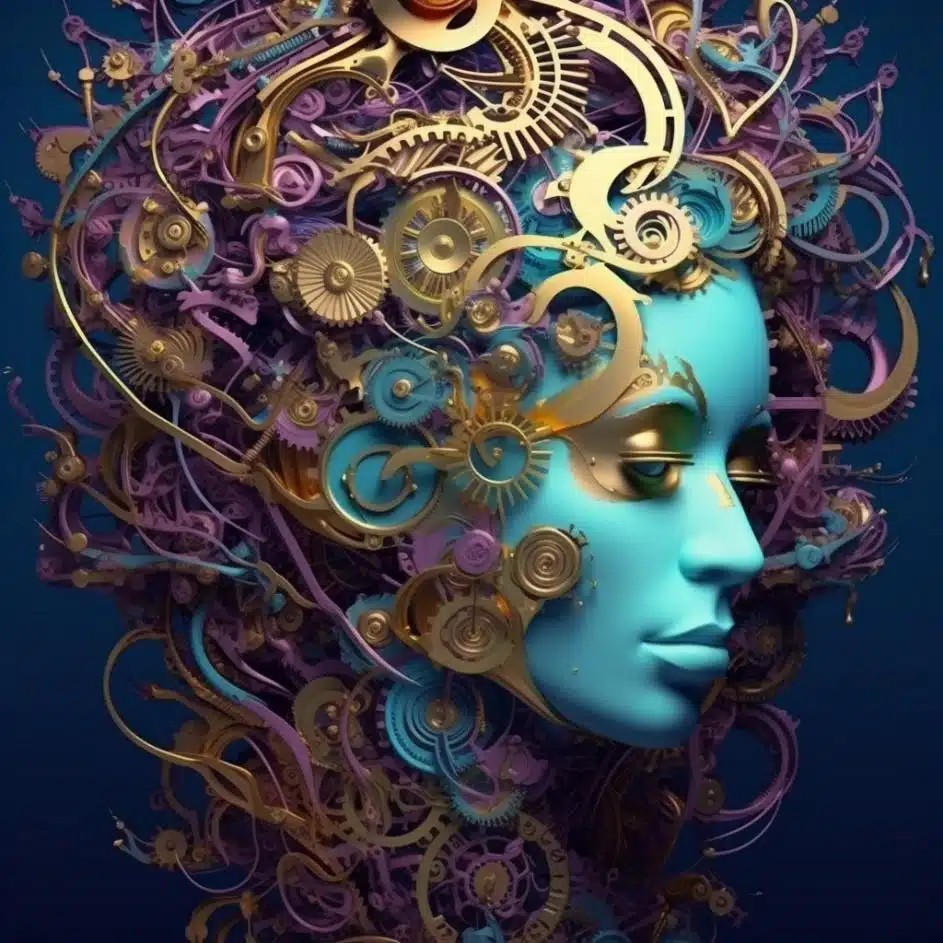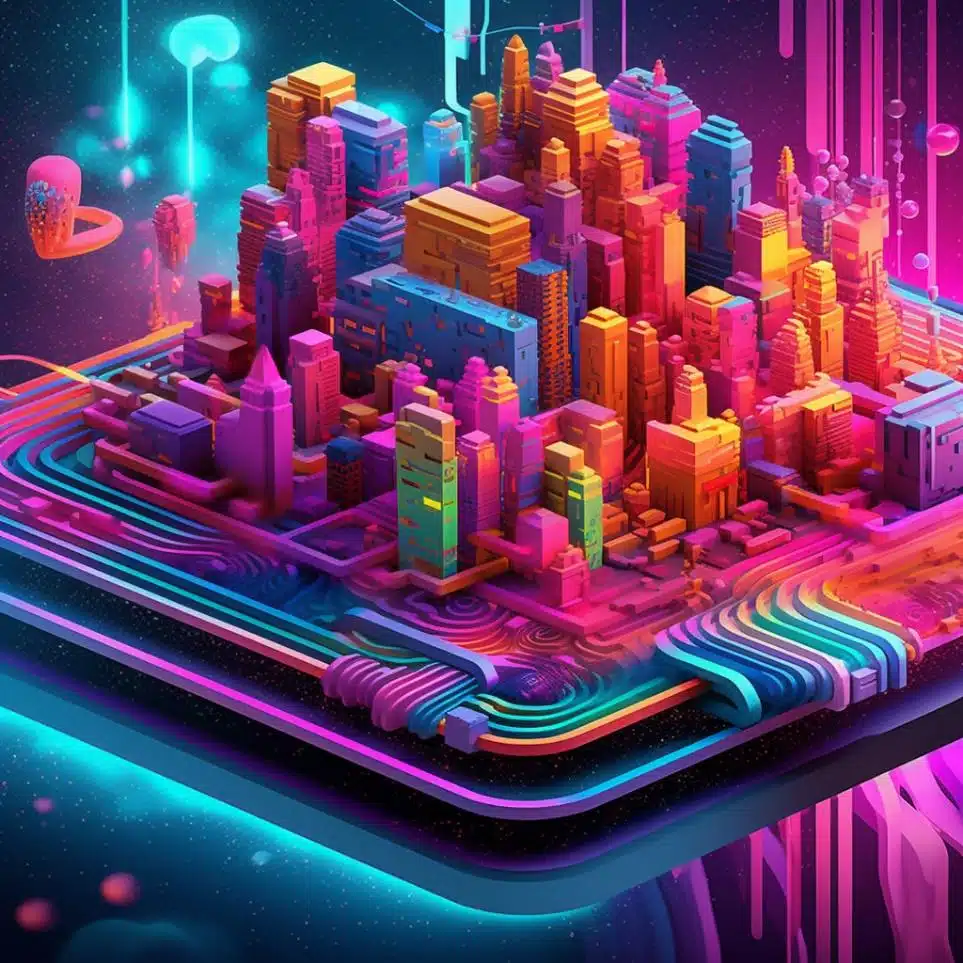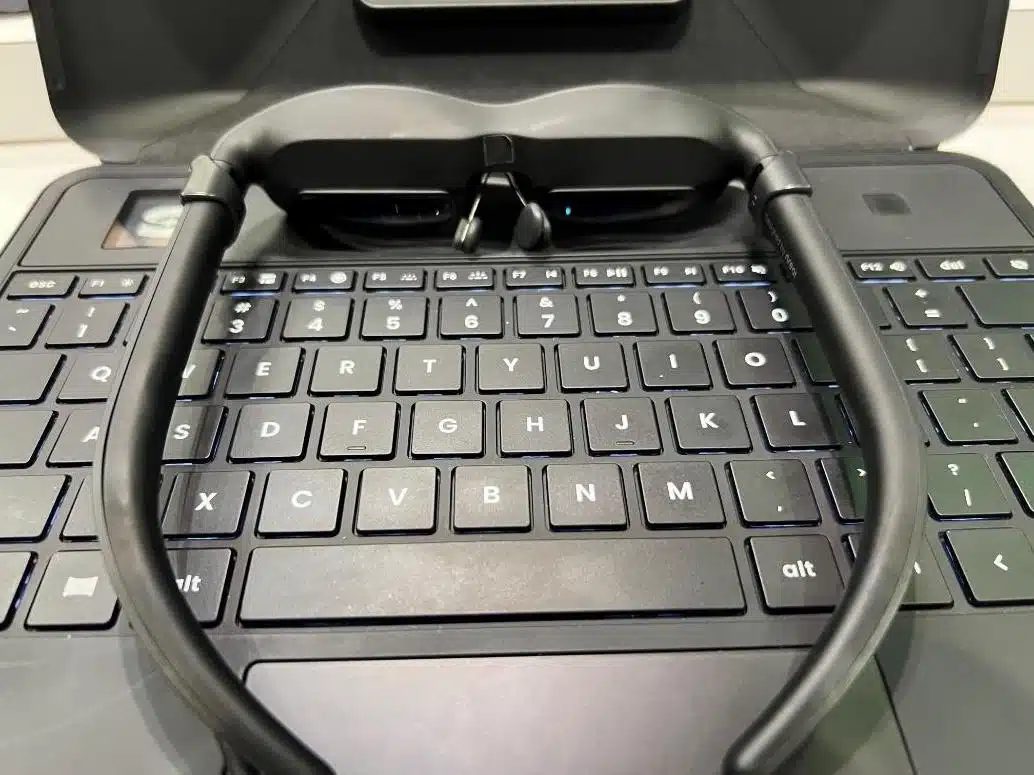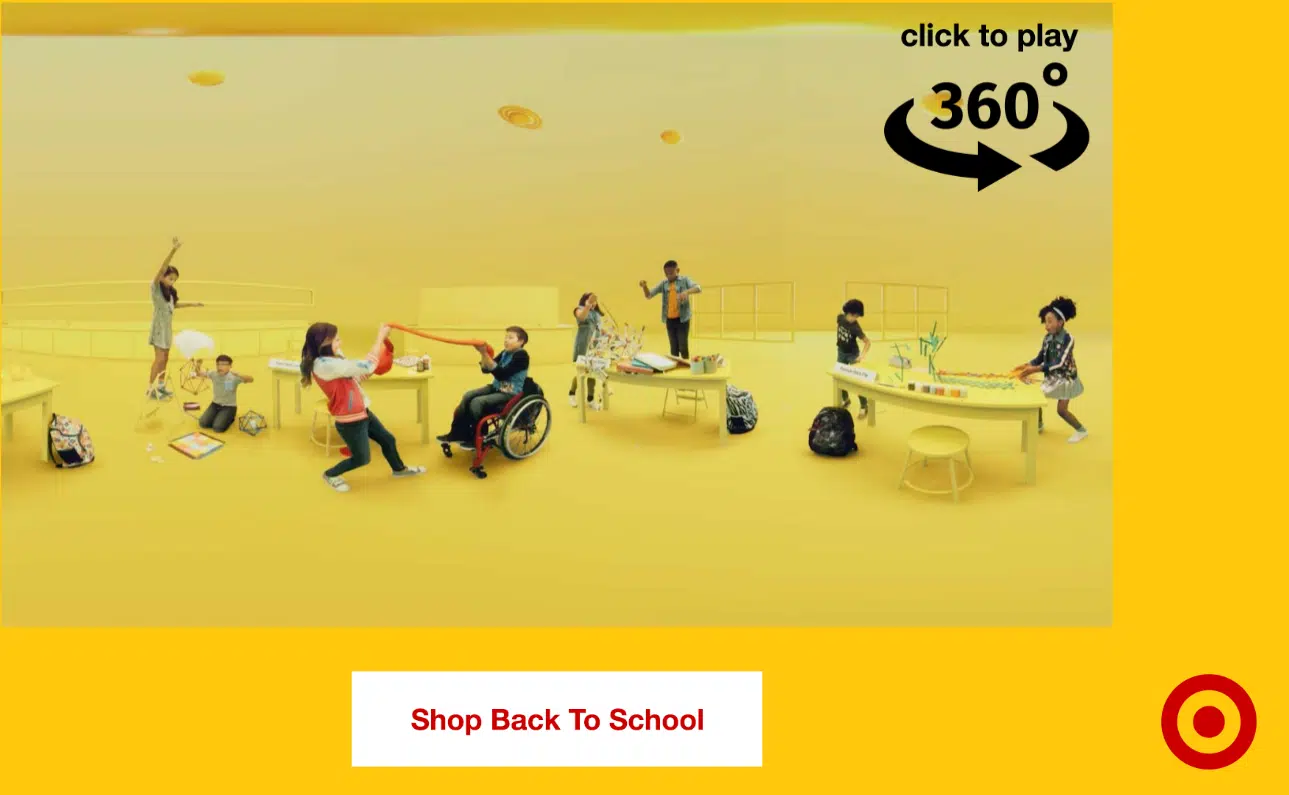Top 5 XR and AI marketing trends in 2023
Here's what's in store for marketers as rapid advances in extended reality and artificial intelligence disrupt the industry.
Recently, I had a panic attack brought on by a sort-of existential crisis. It’s the first time, maybe ever, that I was so flooded with excitement (and anxiety) over technological advances that I needed to pause. My recent trip to Augmented World Expo (AWE), the world’s largest extended reality conference, triggered AI-induced anxiety. I experienced the latest AI-enabled tools and technologies that will transform how we interact with the world around us.
Rapidly disrupting our personal and professional environments like a runaway train, AI is poised to be more impactful than the internet. While such rapid change can cause us to fear the unknown, it can also fill us with wonder and awe as we imagine a future where many of our biggest challenges have been solved. As a society, we need to collectively hit the pause button and work out how to harness this technology ethically and responsibly.
I’m happy to report groups like GatherVerse actively have these difficult conversations as we speak. In the meantime, I’m taking some deep, conscious breaths and focusing on the positive implications of these tools and how they are helping us become better communicators.
Here are my top five extended reality (XR) and artificial intelligence (AI) takeaways from AWE for 2023 and beyond.

1. There will be an AI for that!
AI advances are astounding. Almost overnight, tools have been created to do most of what I teach my communications students. We must understand, embrace and learn how to incorporate these tools into our work ethically.
Keeping up with these tools is impossible. However, an AI-driven website (hah!) now aggregates all these tools, categorizes them and demonstrates the true magnitude of the AI tsunami upon us. There’s An AI For That houses AI tools for everything from finding an AI soulmate to virtual CMOs and everything in between. Think social media management, marketing briefs, email campaigns and, of course, content.
I have been testing many of these tools and the capabilities are impressive! With the right tools, you can build, design, write copy for, optimize and publish an entire website with a fully populated blog in under two hours. I’ve been writing about these tools in my monthly XR/AI Marketing Brief.
While the benefits of using AI for practical marketing tasks, like writing blog posts or emails, are apparent, the true power of these new tools is the ability to scale personalization. And I’m not just talking about swapping out images on a landing page based on a user’s buying history. We’re heading toward a future where everyone can have an AI assistant, tutor, mentor, companion, professor, fitness trainer, therapist or consultant trained on their unique needs, learning style and preferences.
The most inspiring session at the AWE this year was about scaling this type of personalized learning and was presented by Monica Ares, head of immersive learning at Meta. She skillfully outlined the true potential of AI to dramatically impact how we learn, teach and educate. You can watch her entire presentation on AWE’s YouTube channel; it’s not to be missed.
A great example of this type of personalized learning was one of the most talked about apps at AWE called Wol. The project features an AI-enabled talking owl that delivers an entertaining and educational presentation that’s always unique. Accessible via Meta’s latest Quest Pro headset, Meta Quest 2 devices and iOS and Android smartphones, Wol presents the future of education and marketing — personalized learning experiences. AI-enabled characters will allow audiences to guide their own experience and become active participants instead of passive consumers of content.
The advances in AI technology allow a company to effectively scale personalization, bringing down the costs and resources required to deliver personalized learning, training and branded content. You can learn more about Wol on Niantic’s website and try it at meetwol.com.

Dig deeper: XR + AI: 5 tools driving today’s content revolution
2. Coming soon — an AI version of you!
That’s right. You will soon be confronted with the existential question of how to live when you can be in two places simultaneously. Celebrities are already selling their AI-enabled likenesses to brands and studios, allowing them to take on more work and profit from walking, talking, life-like versions of themselves.
These AI doubles won’t be just for the rich and famous. Those with enough cash can create AI-driven versions of themselves that can stand in on virtual meetings, write and respond to emails, attend virtual conferences, star in social media posts and so much more. I must admit that I would love an AI version of myself that could stand in for me and instruct my early morning online spin class. And why not? I have loads of videos, playlists and other data that could train it how to be a much better spin instructor than I can ever be.
If this concept sounds far-fetched, there’s already an AI for that! Founder and COO of XR agency, Exclusible, Olivier Moingeon, is working on a new company to help you create your AI double. Doppl.ai is currently being developed, but you can join the waitlist and be among the first to try it.
Moingeon discussed Doppl and his recently launched and wildly successful Hugo Boss metaverse quest during the XR Pub Crawl for marketing and communications. You can watch the full interview on my YouTube channel, and Moingeon will return to the pub crawl this fall once Doppl.ai has launched.

3. 3D content made simple
Generative AI is the hottest thing to hit our industry since the internet. Seriously, it’s that big of a deal. Anyone can now create beautiful images, videos, articles, 3D worlds, 3D products and more within seconds. These capabilities are being used by about 80% of creative agencies and are turning the old model of copyrighted content on its head.
Currently, AI-generated content is not protected by U.S. copyright laws, so anyone can use that content if you use a tool like Midjourney to create an image. The court rulings on this stuff are changing by the minute, and we’re nowhere near a conclusion. Read Built In’s “AI-Generated Content and Copyright Law: What We Know” for a more nuanced perspective on AI and copyright laws.
Copyright issues aside, there are lots of cool tools to help us create 3D content. Curie is a practical tool that uses AI to turn your 2D images quickly and cheaply into 3D content. They are creating libraries of 3D products for brands such as New Balance, Adidas, Vans, Gucci and many others. Their website boasts an 80% reduction in production time for your 3D assets and 94% increase in conversion rates, a.k.a. sales, after a customer has engaged with your 3D item. You can visit their website to request a demo and get pricing information.
If you are looking for a more creative application of 3D content, then EyeJack is a great fit. The founders of EyeJack are responsible for the award-winning AR campaign, Breonna’s Garden, which is one of my all-time favorite AR experiences. They provide artists with plug-and-play tools that bring their artwork to life in 3D. They combine immersive and 3D moving artwork with audio to create a truly memorable experience.
They just launched their newest offering, EyeJack X, an interoperable XR platform that allows content creators to create, share and sell their XR content. These interactive, cube-like, 3D platforms are easy to update with content and can be deployed as AR content in the real world or a fully immersive virtual world.

4. Hardware transcends the headset slump
How all this AI-enabled 3D content will be consumed is still an open question, as headset sales have been woefully disappointing to those wanting VR to go mainstream (Meta). We all know that the masses won’t be stumbling around with current-day headsets as they are heavy and block out the real world.
That’s all about to change. Apple’s announcement of their spatial OS, Vision Pro, provided a glimpse of a future where a headset or AR glasses can allow users to engage with 3D content and see the world around them. What has been hailed as the holy grail by analysts for years, the mixed-reality headset is on the way. I don’t believe this first version of Apple’s AR headset will go mainstream, but I do trust Apple to test and learn quickly, eventually bringing to market eyewear for the masses.
There are also many start-ups building compelling hardware prototypes. One of the most promising is the AR Laptop, which I got to demo at AWE. A partnership between XREAL AR glasses and Sightful, this new laptop allows users to simply put on a pair of lightweight glasses and be immersed in a 3D virtual desktop with multiple windows and screens. Ever wish you could travel with your double-monitor desktop set-up? Well, for a $2,000 investment, now you can.
Like Apple’s AR glasses, this first version of the AR laptop isn’t ready for prime time, but it’s a huge step forward in hardware that will eventually support 3D computing and content consumption.
5. Scaling XR experiences enabled by immersive ad units

Your paid media and programmatic campaigns no longer have to be boring 2D videos or, worse yet, images. With the help of publication platforms like Undertone, you can create entertaining and interactive ad units that can be delivered at scale.
The example above for Target shows how audio and simple interactivity can provide an engaging and immersive experience with a smartphone. Undertone has a creative studio that helps brands build these types of experiences and a syndication network that amplifies them with paid media. Super smart!
You can also work with social network and gaming platforms, building fun and immersive experiences in the native environment. Snapchat is a great place to start if you’re looking to engage 15- to 25-year-olds and are new to XR. The most popular age group on Snapchat is those ages 15-25, as they make up roughly half of all users, according to Hootsuite.
Snapchat’s advertiser offerings are compelling, and their AR mirror was on-site at AWE engaging attendees. The Snapchat studio provides brands with a global, turnkey solution for creating engaging AR mobile experiences that can be used by millions of users worldwide.
Connecting with your audience through XR
So, are you as excited (and terrified) as I am about the future of marketing and communications? Remember, you are not alone on this unprecedented journey.
The more enlightened AI version of myself would remind us all:
“Great things in business are never done by one person. They’re done by a team of people.” – Steve Jobs
Opinions expressed in this article are those of the guest author and not necessarily MarTech. Staff authors are listed here.
Related stories